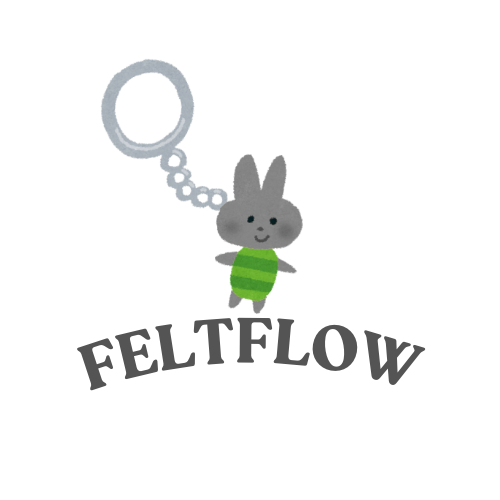Behind every adorable wool felt charm is an artisan with a vision, a needle, and a bundle of soft wool. While the final creation might look playful and lighthearted—a bunny with a mushroom hat or a panda nestled in toast—the process behind it is rooted in centuries of tradition, patience, and craftsmanship.
Felting is one of the oldest textile arts in the world, predating knitting and weaving. It involves matting and compressing wool fibers until they bond together into a dense fabric. Modern felting artists use techniques like needle felting and wet felting to shape and sculpt wool into delightful miniature figures. Needle felting, the most common technique for charms, uses a barbed needle to tangle the fibers as the artist pokes repeatedly into a ball of wool, gradually forming the base shape and refining the details.
What’s remarkable is the level of precision involved. The artist begins with a mental image—or sometimes a sketch—and uses dyed wool roving in various shades to build the body, limbs, facial features, and accessories. A tiny pink blush on the cheeks, a looped smile, or a dot of white in the eyes can bring instant life to a character. This attention to detail is what makes handmade felt charms feel so alive and expressive.
Many artisans draw inspiration from nature, storybooks, childhood memories, or personal experiences. You’ll find charms inspired by forest creatures, seasonal treats, holiday symbols, or even pop culture references. Some artists focus on realism, replicating exact animal features, while others embrace a whimsical, cartoonish style that emphasizes emotion over accuracy.
What sets wool felt charms apart from mass-produced items is the emotional connection. Because they’re handmade, they carry the energy of their maker. Each stitch, twist, and color decision reflects the artisan’s mood, intention, and touch. It’s this “imperfect perfection” that makes felt charms feel personal, like a small piece of someone’s imagination made real.
The process isn’t quick. A single charm can take anywhere from two to eight hours—or more—depending on complexity. Accessories like hats, scarves, mushrooms, or flowers are often made separately and stitched on, adding dimension and storytelling to the piece. Once the charm is complete, many artists add jump rings, keychain loops, or safety clasps to make them ready for everyday use.
Despite their softness and cuteness, wool felt charms are surprisingly durable. With proper care—avoiding moisture, keeping away from direct sunlight, and handling gently—they can last for years. Some collectors even display them in glass domes or shadow boxes, treating them as miniature sculptures rather than just bag charms.
For those who love the idea of meaningful, slow-crafted goods, wool felt charms are a beautiful reminder of what handmade can be. They’re not just decorative—they’re wearable stories, artful companions, and tokens of tenderness, shaped by heart and hand.
So the next time you spot a little bunny in a tutu or a bear holding candy, take a moment to appreciate the art behind it. You’re not just seeing a charm. You’re witnessing the quiet magic of felting—a craft that turns wool into wonder.
